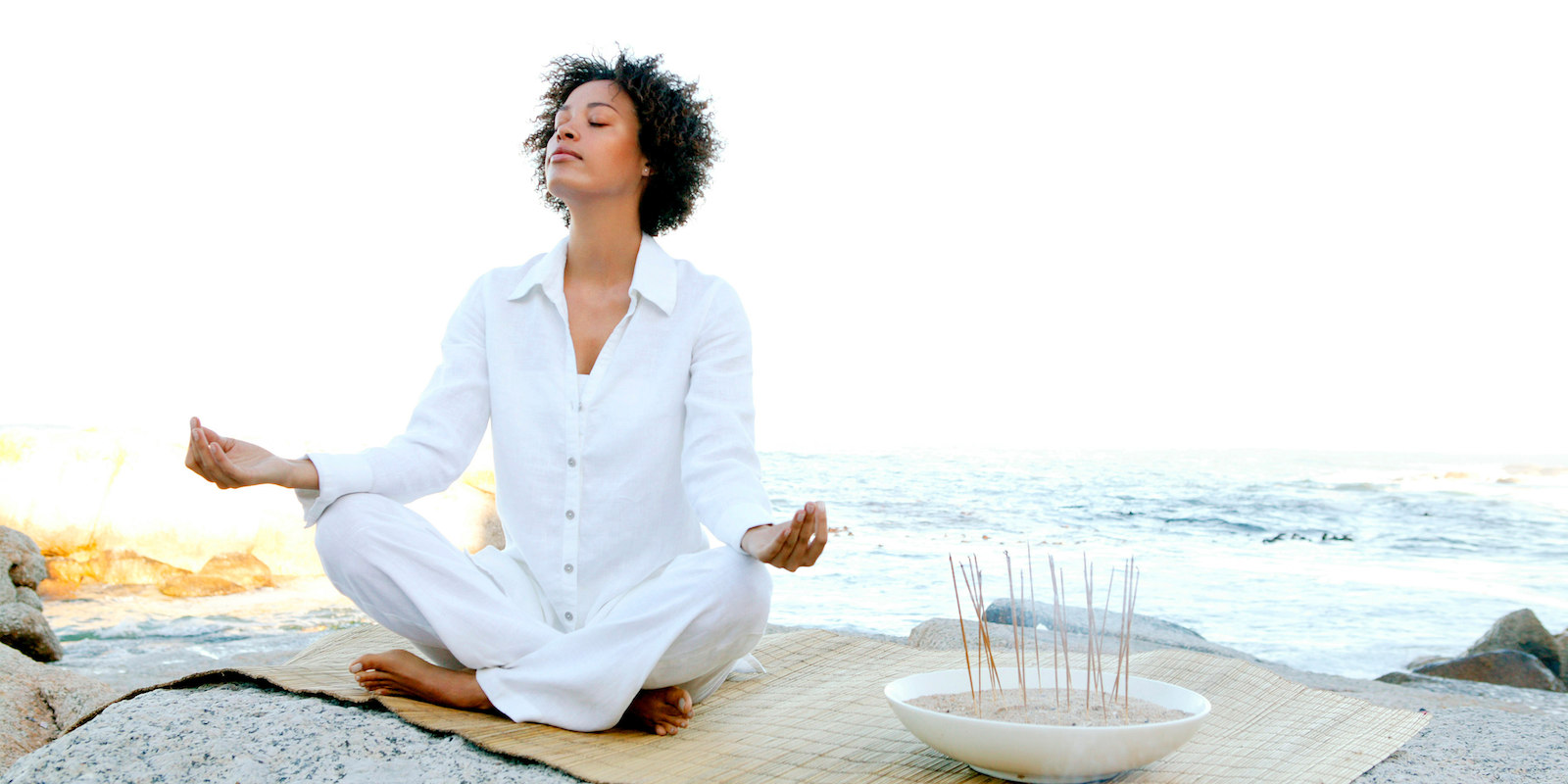The exciting thing about meditation is that anyone can do it — all they need is their mind and a quiet place to settle.
Table of Contents
As Thich Nhat Hanh, a world-renowned Buddhist monk once said: “Meditation can help us embrace our worries, our fear, our anger, and that is very healing. We let our own natural capacity of healing do the work.”
People tout the physical and mental health benefits of meditation around the world, and not just as a technique to reduce stress. Scientific studies now back up their claims.
There's evidence to show that meditation can:
- Treat depression
- Relieve Anxiety
- Enhance self-awareness
- Improve memory
- Help fight addiction
- Aid in pain management
- And so much more!
What Is Meditation?
Put simply, meditation is the act of focusing and managing a person's thoughts or emotions (or letting go of them). There are many types of meditation, and they all take different approaches to grant greater control of thoughts and emotions.
"Meditation" is an umbrella term for a whole range of contemplative and grounding practices. Many of the versions seen now in Western society originated within the Buddhist tradition.
Mindfulness meditation, as one example, involves bringing attention to the breath or another routine action. It's very accessible to beginners and is incorporated into many of the more specialized forms of meditation practice.
If you'd like to learn more about mindfulness meditation, visit Sofia Health and connect with an expert practitioner.
How Does Meditation Work?
Meditation calms the mind and produces a deep state of relaxation. While meditating, a person will redirect their attention away from the stream of countless thoughts that normally occupy everyone’s mind.
Unhelpful thoughts can cause stress and distress, but meditation allows someone to take back control of their inner dialogue. They can pay attention to the present moment and recognize when their focus has wandered. They can observe which thoughts arise at the forefront of their minds, then release those thoughts without judgment.
With time and practice, the mind becomes more comfortable with the idea of just sitting still. The result of meditation, then, can often be a greater sense of physical and emotional well-being.
How to Start Meditating
People often aren't sure how to meditate properly for the first time, and with its rich tradition, meditation can feel overwhelming to dive into. Beginning a meditation journey doesn't have to be a big occasion, though, and a person doesn't need to read a book to understand what they're doing.
Setting a little time aside every day, preferably at the same time every day, is a great way to establish a routine and become familiar with meditating. Even a regular practice of just a few minutes can make a difference to someone's overall well-being. The important thing is to show up and see where the meditation takes you.
Here are some simple steps for beginners:
Step 1 — Find a calm place to sit.
A quiet, calm place without distractions is the best place to meditate. Setting a small amount of time to meditate in the beginning keeps it feeling manageable. The body just needs to be able to stay in the chosen position for the duration of the meditation.
Sitting comfortably in a chair allows you to place your feet flat on the floor, which can be grounding. However, kneeling or lying flat on the floor is more relaxing for some people.
Either way, arms, and legs should be uncrossed, with hands resting on the lap or to the side. The back should be kept straight, but not too tense. A small cushion or rolled-up towel can help with this.
Step 2 — Breathe deeply.
Soften your gaze, take a deep breath in through the nose, expand your belly, then exhale slowly through your mouth. After repeating this four times, gently close your eyes.
Focus on the natural rising and falling sensation as you breathe in and out. There's no need to change the way you're breathing, simply to observe the sensations it creates in the body.
Where do you feel the breath most? In the belly? In the nose?
Is each breath deep or shallow? Is it long or short? Fast or slow?
Step 3 — Notice when your mind has wandered
While breathing in and out, the attention will inevitably leave the breath and start to explore different thoughts. These thoughts are most likely to be everyday stresses, whether at work, at home, or in relationships. It's completely normal when starting to meditate for the mind to jump all over the place.
When realizing that the mind has wandered during meditation, a person shouldn't give themselves a hard time for "not being able to concentrate". They simply need to guide their attention back to observing their breath.
The mind may wander after a few seconds, then after a minute, then after three minutes. As many times as a person becomes distracted, they get to practice noticing when it happens.
Step 4 — Finish when the timer sounds.
If you set a timer, there's no need to rush away from the meditation as soon as it sounds. When you're ready, you should gently lift their gaze or open their eyes.
Take a moment to notice:
- Any sounds in the environment
- Thoughts and emotions
- How your body feels in the moment
That's it — the meditation practice is complete.
To learn more about meditation, the benefits and the different practices, read our article here.
Additional Ideas for How to Meditate
The steps provided above are for a mindfulness meditation that focuses on breath, but other techniques involve drawing attention to external objects like a sound in the room. Other popular types of meditation for beginners include the body scan method and walking meditation.
Transcendental meditation is another discipline that doesn't involve focusing or controlling thoughts at all. Instead, participants allow themselves to reach quieter levels of thought as their consciousness turns inward.
There's no compulsion to meditate in silence, either — here's a useful rundown of the most popular meditation music types people use.
For tip-top guidance on the path to blissful meditation, Sofia Health offers access to expert meditation practitioners teaching at all levels of ability. Simply type "meditation" into their search bar and find mentors to connect with.
Learn more about meditation
|
|
|








